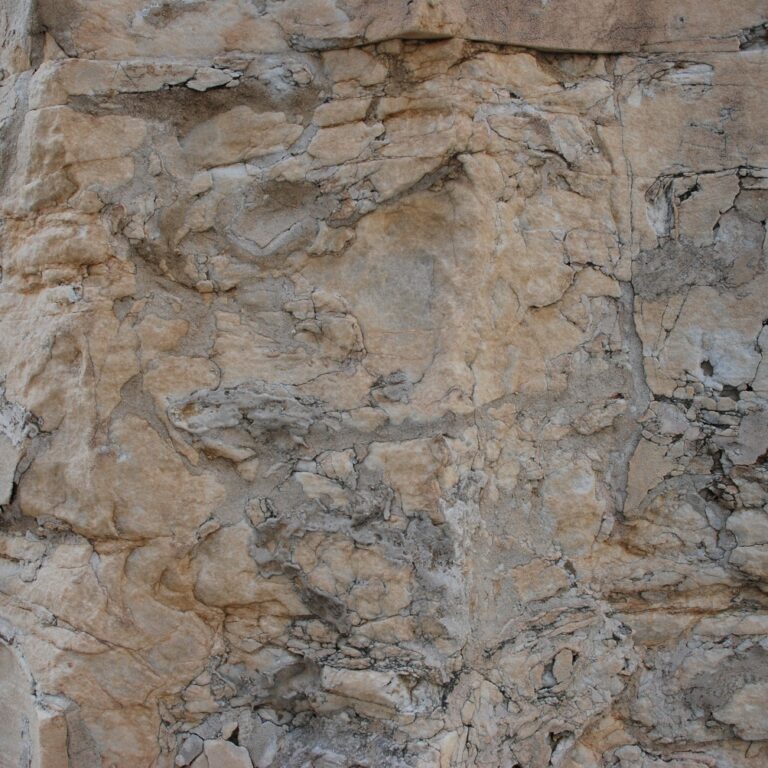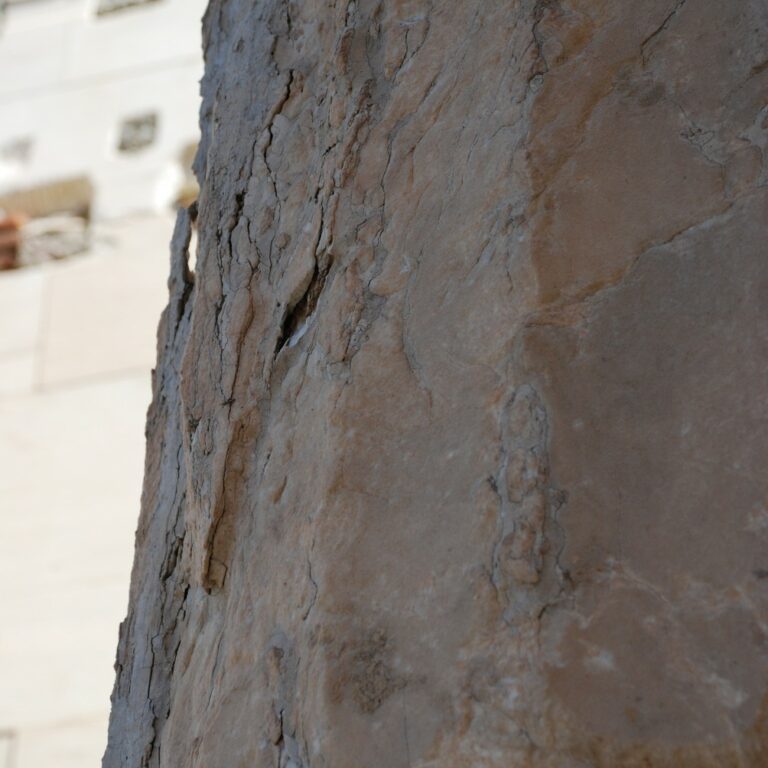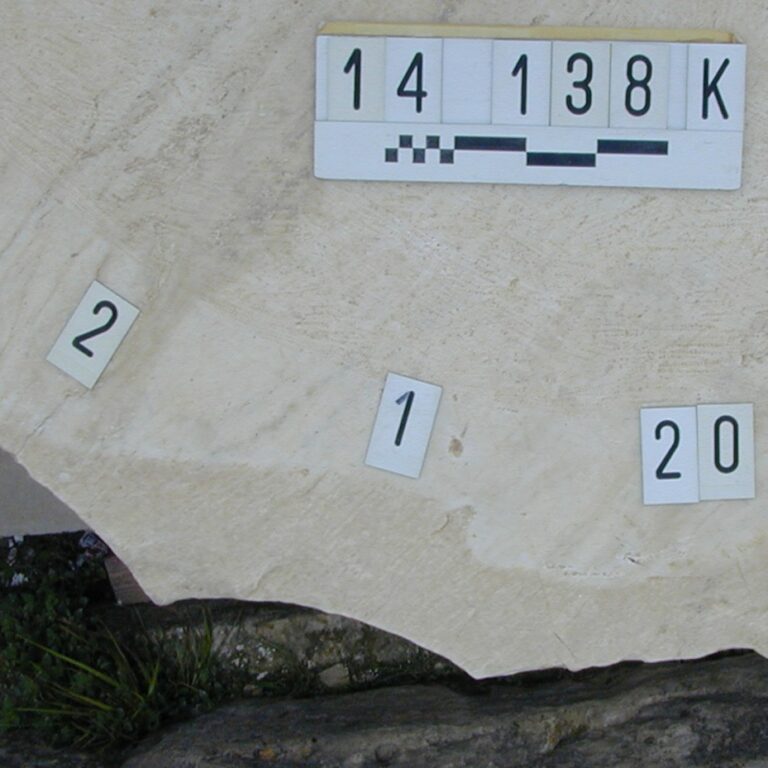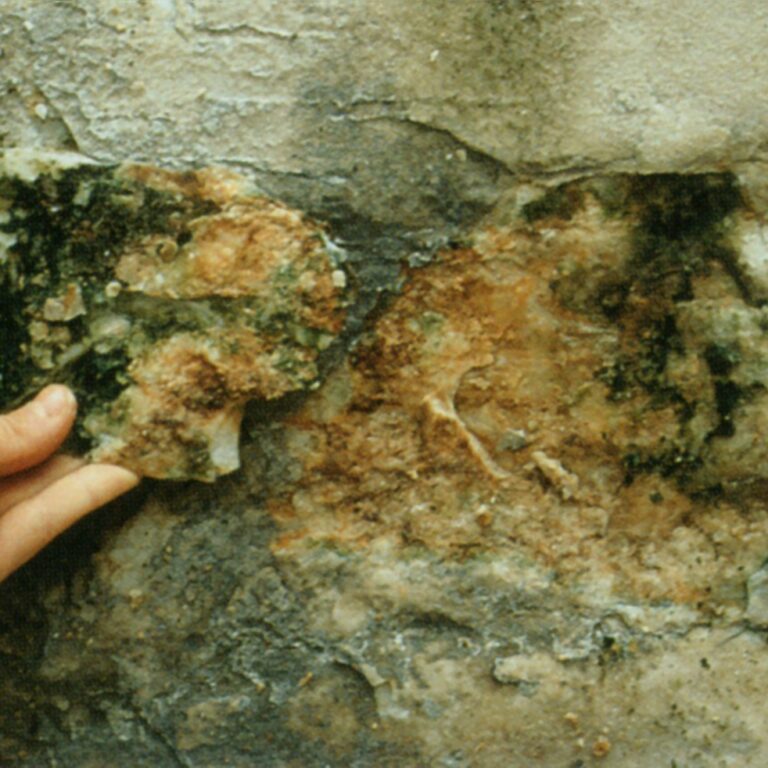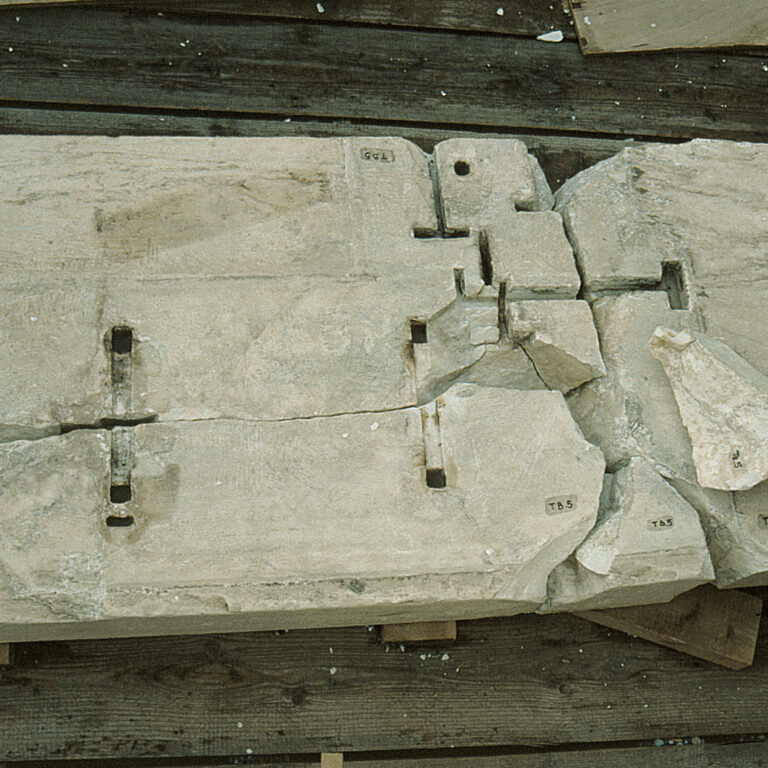
General description of the marble decay: Factors and morphology
The deterioration of the Pentelic marble and the foundations of the monuments is attributed to a combination of-mechanical, physico-chemical and biological factors in conjunction with the atmospheric pollution, the microclimate and the microstructure of the stone as well as the human interventions. The decay can be distinguished in the following forms:
“Sugaring” or granural disaggregation of marble crystals
This appears on surface areas directly exposed to rain fall. The rainwater acidified by carbon dioxide, sulphur dioxide and nitrogen oxides from the air pollution slowly dissolves the marble. This damage is evident in the effect on the marble crystals, leading to the loss of their cohesion and ultimately in their falling off.
Sulphation
The phenomenon of sulphation occurs in areas of the marble sheltered from the rain water. In the presence of moisture and sulphur dioxide the calcium carbonate, main component of the marble, is transformed into calcium sulphate dehydrate (gypsum). At first fine gypsum crystals are formed and these subsequently change into large gypsum crystals. The fine crystals layer retains the relief of the surface.
Deposits of air pollutants – Incrustations
Evident in areas protected from rainwater are airborne atmospheric pollutants and suspended particles such as soot, hydrocarbons, metallic oxides that have altered the colouration of the surfaces. The black crusts are formed from successive deposits of gypsum, recrystallized calcium carbonate and various atmospheric pollutants.
Fractures, cracks and delamination
Many architectural members (blocks or elements) are fractured, and subsequently their morphology and geometry have been changed. The type of failure appears either in the form of fractures, cracks or in the form of delamination, which is the splintering – breaking off of large pieces from the surface of the marble. Most of the cracks have been caused by the rusting and swelling of the iron reinforcements, mainly from the Balanos and Orlandos restoration (1890-1937). There are also fractures that are the result of mechanical forces or heat (such as earthquakes, the fire in antiquity, and the explosion of 1687).
Disintegration and flaking
Disintegration and flaking are observable on areas of the surface where the marble has less coherence, so that more water penetrates and is retained. This situation is due to many factors, such as the microstructure of the marble (silicate impurities), thermal fatigue of the surface from fire, and the circulation of soluble salts from previously used conservation materials such as the Meyer cement.
Pitting erosion
Pitting erosion appears in the form of semi-spherical holes either sporadically or in clusters. It is caused by the activity of micro-organisms whose development is favoured by increased humidity. It appears chiefly on the north side of the monuments and it is worse in areas with silicate veining.
Failure of earlier conservation interventions
In addition to the damage created by the rusting of the iron reinforcements, there are problems resulting from the mortars used in the past treatments to join fragments and to point cracks. Most are based on Sorrel or Meyer cement, which was used extensively on the monuments, including also the statues of the Acropolis, for more than 80 years. It is a white plaster with two basic components, magnesium oxide and magnesium chloride. Today, most of the mortars of this type are flaking or powdering, producing soluble salts and the adjoining marble crumbles Since 1975 when ESMA took over the coordination and supervision of the works the use of Meyer cement on the Acropolis monuments was suspended.
Biodeterioration factors
Research by microbiologists has revealed the presence of a variety of microbial colonies, consisted of bacteria, algae, fungi and lichens. The biological factor in the physico-chemical damage to the marble has been shown to be significant. Both epilithic and hasmolithic microflora alter the colour of the monuments’ surface, the secretion of erosive compounds from various micro-organisms causes the dissolution of the calcium carbonate and a large part of the microflora exerts micro-pressures resulting in surface decay.


